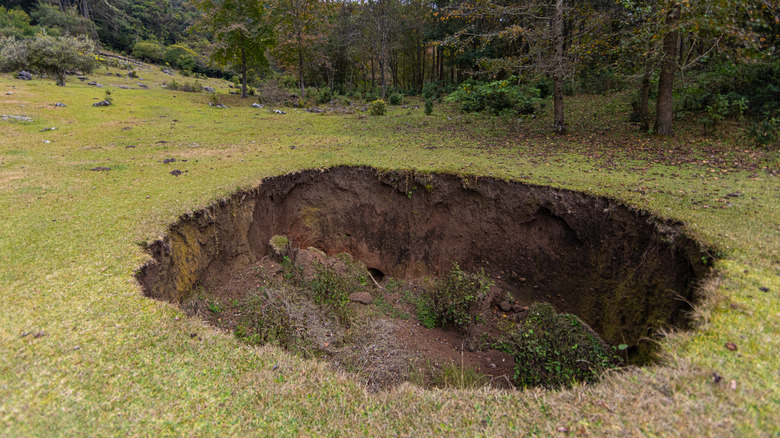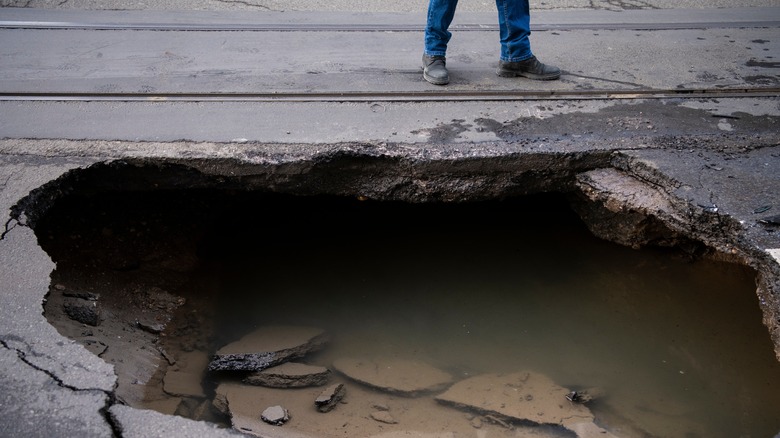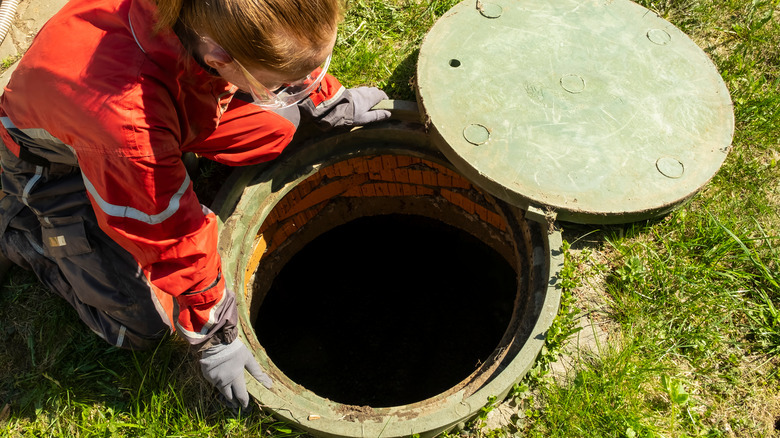Steps To Take If You Think Your House Has A Sinkhole
Sinkholes sound like something out of a science-fiction movie, something that we would never expect to affect us. But they are much more common than you think and can pose a real threat to both city dwellers and rural homeowners. In fact, sinkholes are responsible for around $300 million dollars of damage per year in the United States alone, reported Credible.
Sinkholes endanger both the functionality and safety of our homes. They can negatively affect water accessibility, cause foundation damage, and are most commonly found in the southeastern portions of the country in states like Florida, Alabama, and Texas, according to the International Association Of Certified Home Inspectors. Although rarely deadly, these are unexpected events that can cause severe harm. So, how do we keep an eye out in order to be vigilant? Thankfully, there are steps to assess the immediate and longer-term danger of a sinkhole appearing on your property, and steps you can take if you think your home might be susceptible.
Identify and inspect
As all of our homes are vulnerable to natural disasters, you shouldn't hesitate to evacuate if you believe you are in immediate danger. Beyond making sure your family is safe, it is not worth trying to salvage anything in your house at the risk of injury. In terms of signs to keep an eye out for — misshapen or damaged walls, door and window dysfunction, as well as severe deterioration in the floors, are all important visual cues that could suggest the presence of a sinkhole, notes ATC Group Services.
If you have identified these key signs and evacuated the premises, it is time to contact a sinkhole inspector. Their expert opinion can provide better insight into what ought to be done next. They will not only locate the origin of the sinkhole, but they will also study the chemical makeup of the surrounding earth to determine the extent of the issue, explains the Florida Department Of Environmental Protection. From there, the expert can advise you on your options, recommend a course of action, and explain what the cost will likely amount to.
Report and document the damage
After receiving the official diagnosis, it is advised that you contact your insurance company right away to discuss your options. If you do not have sinkhole insurance, getting this type of protection can be an excellent avenue to consider in the future, especially if you are in a high-risk area of the country — states like Florida and Tennessee, for instance, will insist that insurance companies have the option for sinkhole insurance.
While standard insurance will often cover some of the sinkhole repair costs, there are a couple of additional steps that you can take throughout this process for the best outcome possible. The main advice here is to get in contact with your insurance provider and begin documenting and reporting the incident as quickly as possible. Photos, video footage, and anything you capture should be as thorough as possible, which will only help your case in the long run.


